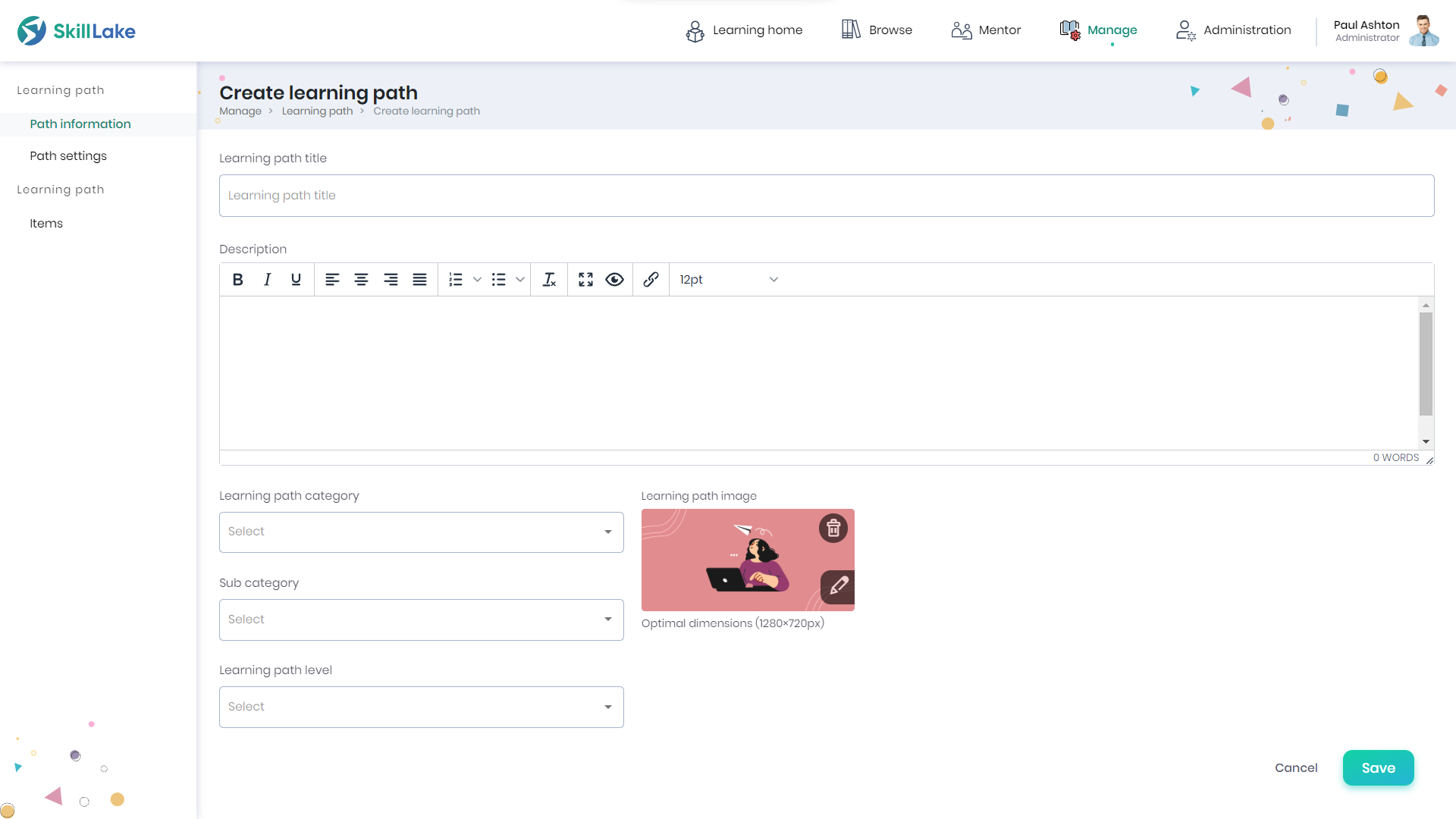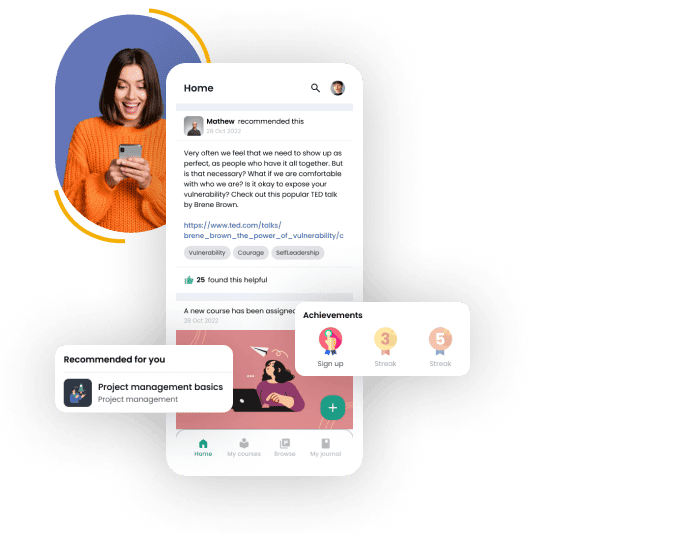How to Cater to the Learning Needs of a Multigenerational Workforce?

Today’s workforce includes people from five generations, resulting in many opportunities and obstacles for managers.
According to a new LinkedIn research, 89% of talent experts believe a company’s performance relates to its multigenerational workforce. Baby boomers make up 15% of the workforce in the modern world, while Gen Xers make up 33%. With 40%, millennials have the most significant percentage, followed by Gen Z with 10%. Since these five distinct generations bring unique perspectives, values, and life experiences to the table, it’s essential to grasp the essence of each generation to foster learning, harmony and productivity within the workplace.
In this blog, we will discuss:
- Types of Workforce Generations
- Challenges in multigenerational workforce learning
- Catering to the learning needs of a multigenerational workforce
Types of Workforce Generations
Generation X (born between the early 1960s and the early 1980s)
Generation X, born between the 1960s and 1980s, are characterized by their self-reliance, capacity to adapt, and skepticism.
Millennials (born from the early 1980s to the mid-’90s)
Millennials, born between the 1980s and 1990s, are part of the digital revolution and value purpose-driven work, diversity, and work-life integration.
Generation Z (born from the mid-’90s to the early 2000s)
Gen Z was born in the early 2000s and are recognized for their adeptness with technology, entrepreneurial drive, and yearning for independence.
Managing a Multigenerational Workforce: The Importance of Learning and Skill Training
When the workforce is multigenerational, recognizing and addressing the unique preferences, aspirations, and learning needs of each generation is crucial.
A 2021 Gallup survey for Amazon found that skills training is one of the top benefits that younger workers seek in a new job. In that survey, 66% of workers between 18 and 24 regarded the opportunity to acquire new skills as the third-most crucial benefit when assessing new job options.
Failing to address employees’ learning needs can adversely affect organizations. Companies may only benefit from potential financial gains with comprehensive training programs, as highlighted by the Association for Talent Development (ATD), which reported a 218% higher income per employee for companies with robust training initiatives.
The study also emphasized the importance of paying more attention to providing learning opportunities to retain engaged employees. 78% of employees are willing to learn during working hours, with 59% even open to dedicating personal time for skill enhancement. The fact that 76% of employees consider learning during working hours crucial for personal growth underscores the value of integrating training opportunities into the workday.
Moreover, neglecting employee development can lead to higher turnover rates and hinder cultivating an innovative workplace culture. It’s crucial to recognize that investing in learning and skill development isn’t just beneficial; it’s essential for employee growth and satisfaction.
Challenges of Multigenerational Workforce Learning
As discussed in the previous section, we can see the different phases and prominence in which today’s workforce was born and grew up. Since the workforce spans different generations, it poses unique challenges to the organization regarding meeting their learning needs. These encompass distinct career expectations, diverse learning styles, technology disparities, communication obstacles, and personal preferences. Strategic solutions are essential to foster inclusive learning environments that empower employees of all ages to thrive in their careers.
Different Expectations
Each generation has distinct expectations regarding career growth, training, and development opportunities.
According to a recent survey, Skill development is a top priority for 83% of employees, and 88% have already taken steps to enhance what they can deliver at work. These numbers leap higher for Gen Z and Millennial employees, 74% of whom cite a lack of career mobility and skills development options.
Different Learning Styles
Generations exhibit varying preferences for learning styles, such as classroom training, e-learning, mentorship, or self-directed learning. Organizations need to design learning programs that cater to the diverse tastes of traditionalists who may prefer classroom settings, Gen Xers who appreciate technology-enhanced learning, Millennials who favor collaborative and interactive approaches, and Gen Zers who thrive in digital environments.
Technology Divide
Generational differences in technology adoption can lead to a digital divide within the workforce. Bridging the technology gap between generations, Gen Xers are digital proficient but cautious, Millennials are tech-savvy, and Gen Zers are native digital users.
Communication Barriers
Differences in communication styles and preferences among generations can hinder effective learning and knowledge sharing. Acknowledging and embracing the differences in communication styles and preferences among generations is crucial for fostering effective learning and knowledge sharing in today’s diverse workforce. By promoting understanding and adaptability, organizations can harness the strengths of each generation and create a more collaborative and productive work environment.
Training Resource Allocation
Allocating resources for training and development initiatives can be challenging when catering to the varying needs of different generations. Organizations must determine how to distribute training budgets effectively, considering the differing requirements for traditional training, coaching, mentoring, e-learning, and other forms of development.
| Traditional Education | Online Learning |
| High staffing and facility costs. | Reduced staffing needs. |
| Expenses on physical materials and maintenance. | Elimination of facility costs. |
| Transportation-related expenditures. | Digital materials for cost-efficiency. |
| Limited scalability. | Enhanced accessibility and scalability. |
Overcome the learning challenges of a multigenerational workforce: Benefits of Upskilling for Employees
Organizations can overcome the learning challenges of a multigenerational workforce by planning strategically. It is important to consider the diverse preferences of each generation when developing a training plan.
Customize Learning Paths
Acknowledging the diversity in career aspirations and development requirements among various generations is essential.
Customized Learning Paths
- Recognize and respect the diversity in career aspirations and development needs across generations.
- Develop individualized learning paths for each employee.
- Curate tailored sets of courses and activities.
- Focus on specific knowledge areas and competencies relevant to their roles and learning styles.
- Ensure that employees receive training aligned with their professional growth needs.

Personalized Career Development Strategies
- Collaborate closely with employees to understand their career aspirations and ambitions.
- Align their individual goals with the organization’s objectives.
- Establish a performance management system for continuous evaluation.
- Assess employees’ knowledge areas and competencies to identify strengths and areas for improvement.
- Use data to inform and adjust personalized career development strategies.
- Enable employees to excel and contribute effectively to the company’s success.
Promote Flexible Learning Formats
Generational preferences for learning formats can vary significantly, so developing a range of flexible learning options is essential. Consider the following:
- Synchronous and Asynchronous Learning
Offer synchronous (real-time) and asynchronous (self-paced) learning opportunities. Synchronous learning can cater to those who prefer immediate interaction, while asynchronous learning allows flexibility for self-paced progress.
- Flipped Learning
Implement a flipped learning approach where employees review materials independently (e.g., videos or readings) before engaging in collaborative discussions or activities during live sessions. This approach can work well for all generations, as it emphasizes independent learning and collaboration.
- Self-paced Learning
This approach may appeal to Generation X and Millennials, who value autonomy and control over their learning experiences. They often prefer to progress at their own pace.
- Instructor-led Training
Baby Boomers and some members of Generation X may prefer traditional instructor-led training, as they may be more accustomed to classroom-style learning experiences and value expert guidance.
- Microlearning
Microlearning can be effective for Millennials and Generation Z, who are accustomed to consuming information in shorter, more digestible formats, often through digital media.
- Social and Collaborative Learning
This approach can appeal to all generations, but it may be especially beneficial for Baby Boomers and Generation X, who appreciate the value of peer interaction and group discussions.
- Interactive Workshops
Interactive workshops can be popular among Generation X and Millennials, who value hands-on and experiential learning. Baby Boomers may also benefit from interactive workshops, depending on their preferences.
Choose a Learning Platform
It is important to adopt a versatile learning platform that can cater to the diverse learning preferences of all generations.
- Personalized Learning Paths
Choose a platform that allows employees to customize their learning paths based on their preferences and learning styles.
- User-Friendly Interface
Ensure the platform has an intuitive and easy-to-navigate interface, accommodating individuals with varying levels of tech proficiency.
- Mobile Accessibility
Opt for a platform with a user-friendly mobile app that supports various devices, enabling employees to access learning materials on the go.

- Diverse Content Formats
Select a platform that offers a variety of content formats, including bite-sized modules, long-form resources, videos, and podcasts, to cater to different learning preferences.
- Seamless Software Integration
Integrate the chosen learning platform seamlessly with existing software and systems in the organization, facilitating efficient tracking of employee progress and skill development.
Promote Mentorship and Reverse Mentoring
Introduce mentorship initiatives designed to match seasoned staff with younger colleagues, fostering the exchange of knowledge and nurturing professional advancement. Establish structured mentorship programs where older employees can guide younger ones in career development and workplace skills. Promote reverse mentoring, where younger employees mentor more senior colleagues in areas such as technology and digital skills.
Embrace Technology
Understand the technology gap among generations and adopt measures to bridge the gap. Provide technology training programs for employees who need to become more familiar with digital tools. To encourage continued skill development, offer advanced digital resources and tools for tech-savvy generations.
Conclusion
Navigating a multigenerational workforce requires acknowledging and accommodating diverse learning preferences. Each generation brings unique learning styles, necessitating customized training and development programs. Identifying essential competencies and knowledge areas is pivotal for crafting personalized learning paths to meet the multigenerational workforce’s diverse learning needs effectively.
Build a culture of continuous learning with Skill Lake’s state-of-the-art people development platform. Give your employees professional training to help them excel in their job roles and propel your business to greater efficiency and success.
Start Today

Aarathy Jayakrishnan
Aarathy is an e-learning professional and enthusiast with a keen understanding of learning and development concepts. She writes insightful content, unraveling the possibilities that e-learning holds, and strives to make education open for all.